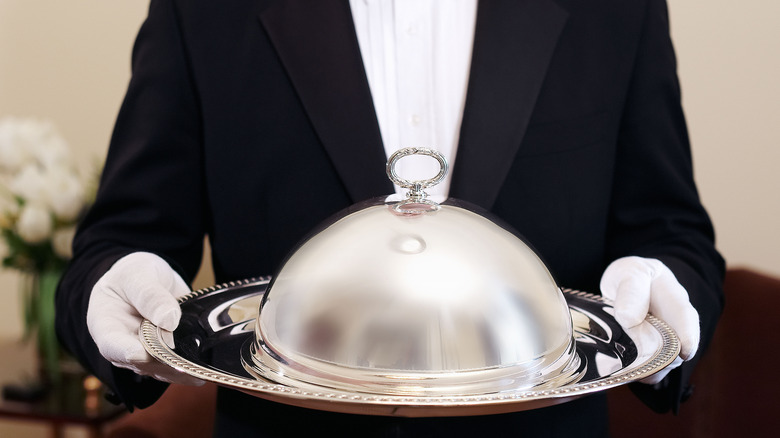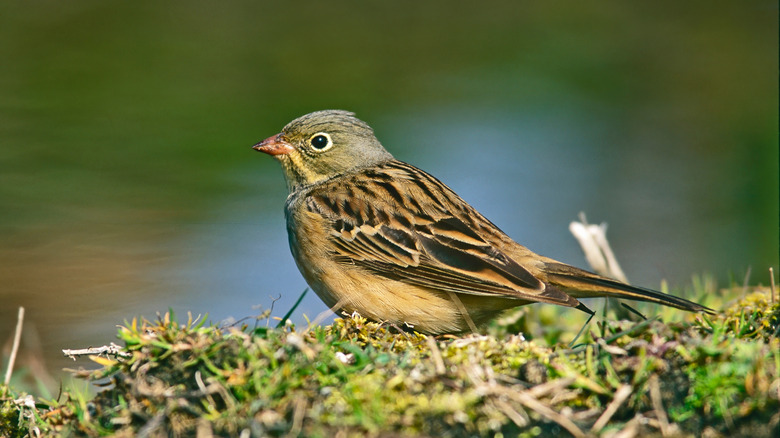Why Diners Cover Their Heads When Eating This Banned French Dish
French gastronomy has more than its share of unusual culinary traditions (for example, frog legs), but there's a certain controversial dish that just might win the top prize. The meal is considered so decadent that it's traditionally eaten with a napkin draped over one's head to shield the act from the eyes of God. Some say the napkin adds to the experience, capturing the food's aroma. Others insist that it's an elaborate gastronomic ritual. (It's often described as "eating the soul of France.") The snack in question is a small, adorable songbird called the ortolan bunting that's native to Europe.
The ortolan has been considered a delicacy since the Roman Empire ruled much of Europe thanks to the bird's rich, fatty flavor. By the 18th century, the songbird became a symbol of haute cuisine in France and was enjoyed by royals and the elite. In the 20th century, as it became ever more rare, the dish came to be seen as the ultimate French luxury. But not everyone in Europe was infatuated with the controversial dish. Thanks to over-harvesting and habitat loss, the ortolan bunting's numbers began to drop. In 1979, the European Union voted to ban the hunting and sale of the songbird, and France reluctantly followed with stricter enforcement measures two decades later. But despite all these legal protections, some diehard fans are still capturing and consuming the ortolan, often as an act of defiance.
Why the ortolan dish is controversial
Preparing an ortolan for eating is somewhat more intense than getting your average chicken ready. The birds are traditionally captured and kept in darkened cages to confuse their internal clocks, causing them to overeat and put on a considerable amount of fat. (In this way, ortolan is quite similar to foie gras, a luxury King Charles won't touch.) Once fattened, the birds are drowned in Armagnac, a French brandy. From there, they are plucked, roasted, and served whole.
As for consuming, diners are supposed to pick up the cooked bird and eat it feet first, bones and all, spitting out only the beak. Supposedly, the crunch of the bones, the squirting of fat, and the bursting of hot, juicy organs make for an intoxicating bite that's best experienced in the privacy of your own dinner napkin.
The food is so emblematic of culinary excess that former French President Francois Mitterrand ate ortolan during his famous last meal. In fact, he ate two of them. (Mitterrand's last meal outshines all others, including the last meal Gordon Ramsay planned for himself.) Though it's nearly impossible to find the banned dish today, you might see it occasionally appear in pop culture as a symbol of ruthless exorbitance: The ritualistic dining experience was even featured in an episode of the HBO show "Succession." It's just a shame that no one in "Succession" ever enjoys their food.

